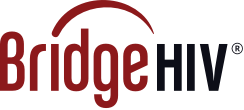
Developing and Evaluating Community Engagement Materials through New Technology
Translating complex science into widely accessible language requires a delicate balance of information and emotion. As one community member I encountered this summer insightfully noted, some people are more captivated by a message because they feel a connection. Others are ultimately persuaded by hard numbers and verifiable data.
As a RAMP scholar*, the goal of my primary project was to understand the impact of an educational, white-board animation video about clinical trials and HIV vaccine research on engaging populations at high risk for HIV infection in San Francisco and Oakland, with a focus on young Black and Latino men who have sex with men (MSM) and trans women who have sex with men.
The video was developed by Bridge HIV and Youreka Science, a local San Francisco company that specializes in using multimedia technology to explain the latest developments in scientific research. The white board video outlined key messages regarding HIV vaccine research and the role of clinical trials in evaluating scientific and medical interventions.
We evaluated the white-board videos using an online survey of 223 Bridge HIV and community partner organization Facebook subscribers. We also evaluated the white-board videos using two focus groups separated by race/ethnicity. In one focus group, we had 6 Black MSM and 2 Black trans women; in the second group we had 8 Latino MSM.
Data collected is still being analyzed, but our overall online survey sample consisted of 82% respondents from California with 50% of all participants self-identifying as female. The racial/ethnic breakdown was 35% Latino, 33% White, 18% Asian, 9% Black, and 5% mixed race. All participants had at least some high school with the majority having an educational level greater than high school. Participants were asked to self-report their knowledge of vaccine research. Among those with fair or poor rated knowledge, more were female, Latino, have an annual income less than $20,000, and have never received information regarding vaccine research.
We asked participants about their willingness to participate in and share information about vaccine research, which was measured by a 5-point likert level of agreement scale. Participants were asked, before and after viewing the white-board videos, to indicate how much they agree or disagree with the following statements: “Given my current knowledge of clinical and vaccine research, I would be willing to participate in HIV vaccine research” and “Given my current knowledge of clinical and vaccine research, I would be willing to share information with my peers about HIV vaccine research.” Among the 65% of participants who initially had either neutral or low agreement about their willingness to participate in vaccine research, we had a 25% increase into high agreement. Among the 28% of participants who initially had either neutral or low agreement about their willingness to share information, there was a 42% increase into high agreement after watching the videos. Overall, there was a net positive change in participant willingness to participate in and share information about vaccine research after watching the white-board videos.
Among the focus groups, the videos generally received a warm welcome with one participant stating “I enjoyed the way it breaks down the [research] process” and another stating “it would…just assuage certain fears”. Some main themes have emerged regarding the content of the videos and the way the message is delivered. For example, participants generally preferred a simple message with little need for a lot of detail. They felt that too much detail raised more questions that would be best addressed in an information session not in an educational video. Another main theme that emerged was distrust of research and the need for some historical context regarding the informed consent process. Participants also appreciated the use of animation to remove stigma about HIV stating “there are so many different communities that are involved in this…so [the animation] was very good at highlighting that we’re all doing it together”.
In my summer experience working with Bridge HIV within the Community Programs Department, I got to learn about the different clinical trials Bridge HIV is working on and the need for ethnically diverse research participants. We are excited to use the data and feedback obtained for the online survey and focus groups to improve educational and marketing tools used by Bridge HIV to educate the general public and recruit research participants in HIV vaccine research. We would like to thank Bridge HIV supporters who participated in the online survey and focus groups, as well as to our community partners who gave us feedback.
View the RAMP white board videos on Youtube: Introduction to Clinical Research & Vaccines 101
By Jessica Cruz Whitley
*I am a 4th year medical student at UCSD. I spent the summer of 2014 at Bridge HIV as an HIV Vaccine Trials Network Research and Mentorship Program (RAMP) Scholar. RAMP is an investment in a young generation of HIV researchers by providing scholars with structured mentoring, project and salary funding, training, and professional development activities.
November 2014



